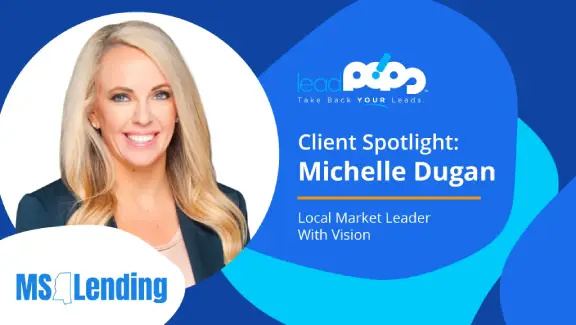4 Essential Ways to Get Your Emails Read

In creating an effective online sales funnel, few items will matter as much as that first email.
Allow me to demonstrate.
Let’s say you bring an audience to your website. You’ve taken the time and effort to handle SEO and build a compelling web presence.
Then, at some point, the interested parties don’t just click around on your website—they sign up for your newsletter, or request a report or some other lead magnet.
This is what you might call a turning point in your relationship with these potential leads.
Either the emails you send engage them—or they don’t.
See Your Potential ROI with leadpops
See what's possible. Fix it fast.
Either they become customers—or they don’t.
What’s the difference between the two possible events? Simple: getting your emails read in the first place.
Your marketing emails need to be relevant and engaging. Not only do they need to get opened, but they need to get read and compel action.
Hopefully, they’ll even click on your offer at the end, or simply reply.
If you want a steady stream of new business from your online presence, you’ll need to know the art of emails. And the most important color in your palette will be simple readability.
Here’s how to get your emails opened—and read.
Book My FREE
Growth Strategy
Session
See what's possible. Fix it fast.

1. Put 50% of your effort into the subject line.
Think of the last time you opened an email from an unknown or unfamiliar sender.
I’m willing to bet that it did not have a boring subject line.
Just the opposite is likely true. The subject line drew your attention. Enticed you. Made you feel like whatever was within the email content itself, it was probably spicy enough to merit reading.
The simple fact is, every email first arrives with one sentence. The subject line is your foot in the door.
If you don’t handle it well, then the rest doesn’t matter.
See Your Potential ROI with leadpops
See what's possible. Fix it fast.
Later on, I’ll give you some tips for writing engaging subject lines that entice people to open up your emails.
But we’re not there yet. At this point, all you need to know is that the subject line matters so much that it’s worth investing half of your time coming up with it.
Granted, this is a rule of thumb—and like all rules of thumb, it will come with some exceptions.
But that doesn’t mean the principle isn’t sound.
To accomplish this, sit down with a pen and a pad and put yourself in your reader’s shoes.
If you’ve done other marketing work before, then you’ve likely thought of a client profile: who your idea client is, what they’re looking for, what problems they’re trying to solve.
Book My FREE
Growth Strategy
Session
See what's possible. Fix it fast.

Think about what problems they have, and then create an email subject line that directly addresses these problems.
If this extra time increases your open rate by 10%, that can mean hundreds—maybe even thousands—of additional email openings from your readership.
2. Include a Compelling Element
If there’s one thing every email subject line needs, it’s this:
It absolutely has to be compelling.
But there’s more than one way to create a compelling email subject line. Consider the following:
See Your Potential ROI with leadpops
See what's possible. Fix it fast.
- Appealing to their self-interest. What about this email benefits them? What solution do you have for the problems they’re facing?
- Creating a sense of urgency. Is time running out on a special offer? Is there a trend that absolutely must be capitalized on? Why should they hurry to open your email?
- Displaying shock. Was there a headline that absolutely floored you this week? Save it and use it! You’d be surprised how simply displaying your shock at a turn of events can make your emails vastly more compelling.
- Telling an unusual story. One of the most intriguing subject lines introduces a story that has a twist. If you can make people want to read more because they have to know the ending, you’ve accomplished something powerful.
- Bringing a unique offer. This is in the camp of “appealing to their self-interest.” Who’s going to turn down an offer that sounds generous?
- Adding social proof. “Warren Buffet’s take on buying a home…” is an engaging subject line for two reasons. First, it invites you to open it up, because it makes an implicit promise about the content it contains. Second, it includes “Warren Buffet.” People want to know what Warren Buffet has to say—his name lends credibility and social proof to the content they’re about to read. It’s one of the most powerful ways to make your email subject lines more compelling at the drop of a hat.
When you brainstorm your next email topics, try to keep these specific compelling elements in mind. You might even use them to generate your next topics by taking it one category at a time.
Of course, you never want to sound like a “cheap marketer.” You don’t want to cry wolf with every subject line, only to fail to deliver the goods once they open the email. That’s a sure way to lose subscribers.
But remember you’re taking some 50% of your email marketing time only thinking of headlines. It’s worth researching the topics and news items that make for a genuinely seductive subject line.
3. Make it Personal
A person’s name is to that person the sweetest and most important sound in any language.
-Dale Carnegie, author of “How to Win Friends and Influence People”
Book My FREE
Growth Strategy
Session
See what's possible. Fix it fast.

The reason email newsletter software makes it so easy to incorporate peoples’ names into your subject line?
It’s effective.
It doesn’t get any more complicated than that. People like hearing their own name.
The problem is, many people are used to newsletters using their names by now.
That means you should take the time to craft email headlines in which you use their name in an organic, natural way.
No more “[YOUR NAME], here’s what you need to know…”
See Your Potential ROI with leadpops
See what's possible. Fix it fast.
Simply inserting their name at the beginning of the subject line isn’t good enough anymore.
Instead, try “Here’s that info I promised you, [YOUR NAME].”
That one actually sounds like something you might say to a friend. It sounds like you’re following up on an email—and that there really is a person writing it.
This small change might not sound like a lot, but when you’re competing in the average inbox, those little details add up.
4. Always Deliver on What You Promise
You can use plenty of fun tricks and tips to get your emails read.
Book My FREE
Growth Strategy
Session
See what's possible. Fix it fast.

But if you don’t follow through on any of it, then your emails will stop getting read…in a hurry.
Think of your newsletter list as an audience. And like any audience in show business, they start to get “used to the formula” after a few experiences with you.
If you write really catchy headlines but fail to back them up with what they promised, they’re going to unsubscribe as quickly as they can.
That’s why it’s so essential that you deliver on what your email subject lines promise—and that you do it on a regular basis.
If you want help in that regard, I’d like to point you to leadPops’ free trial. Not only will it help you boost your email marketing results, but it will help you improve your entire web presence.
This will help yield the qualified, exclusive leads that justify all that time you spend on marketing. And along the way, you might just develop a knack for writing great emails.
See Your Potential ROI with leadpops
See what's possible. Fix it fast.



